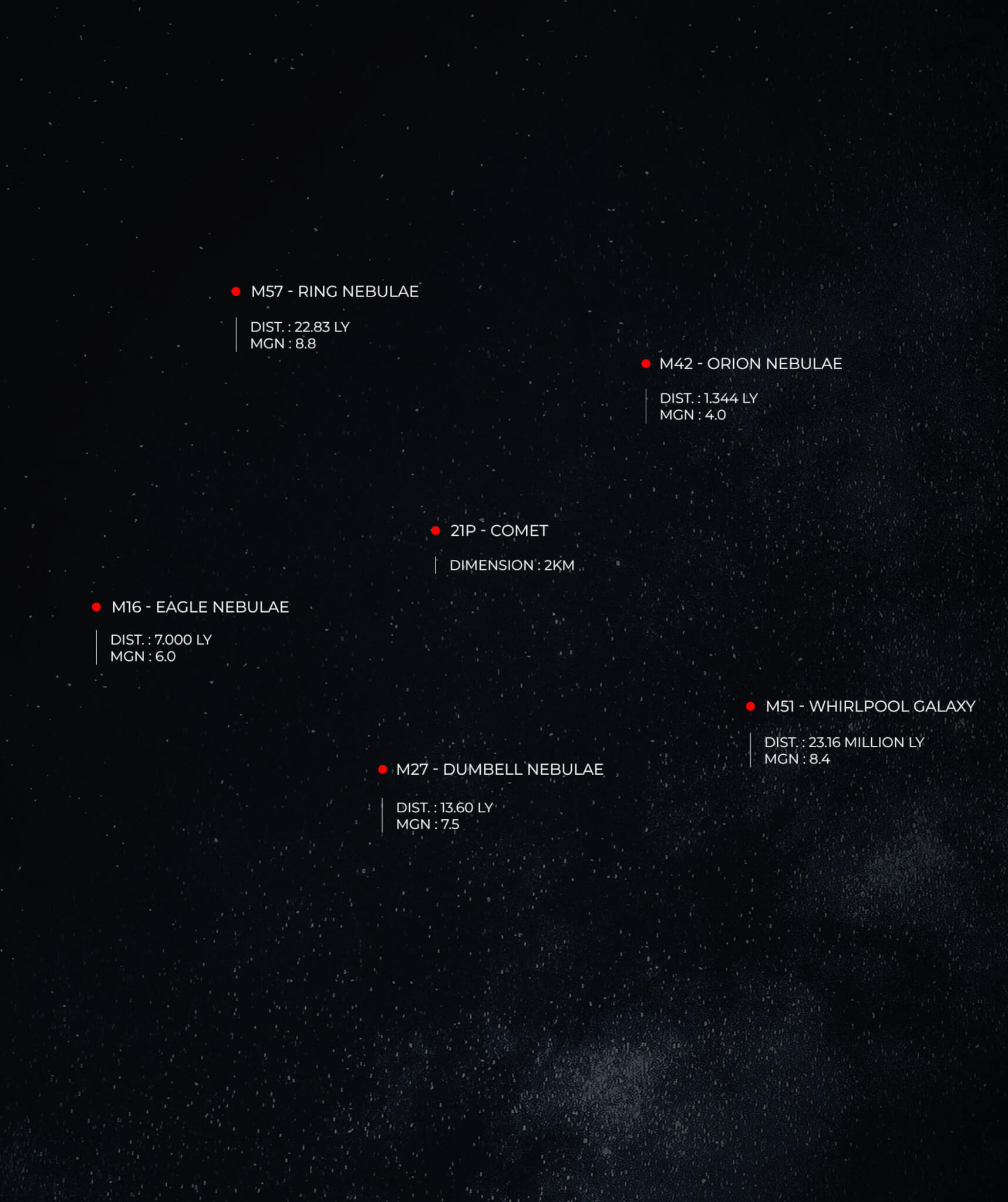Exoplanet Transits
Tutorial
TUTORIAL TO BECOME A PLANET HUNTER
First time observing a distant planet orbiting around its sun? Read this page to master your Unistellar telescope and join our team of Planet Hunters.
PRE-OBSERVATION
1 – Select Your Mission
An exoplanet transit is a unique event to record, and to observe one you need to be in a specific area on Earth. First, you need to select a mission visible to your location. This is easy using the Scientific Events Prediction page! This page will show you all of the transits visible to your observing site within a given date range. It is also accessible through the Unistellar App’s Home or Science menu by clicking on the “Find Predictions” icon.
To use the Predictions page to observe occultations, first make sure that the “Exoplanet Transits” button is highlighted in yellow. In the “Location of the observation” box, input the address or coordinates of the location on Earth from which you will be observing. Lastly, in the “Starting Date” box select the date and time after which you would like to start searching for transits to observe. The default is the current time (now).
You are now ready to search for missions by clicking the “Generate” button, which will display a table of events visible to your location.
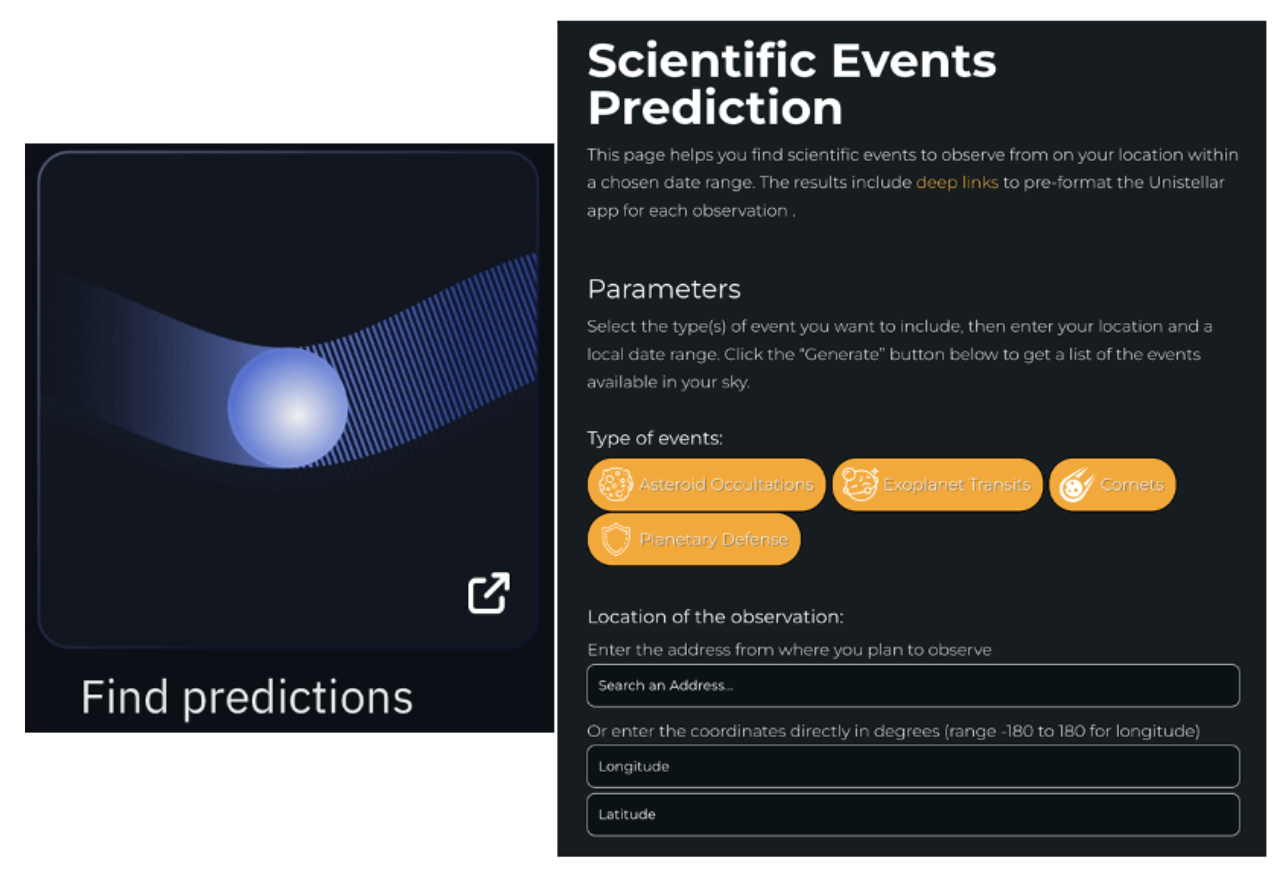
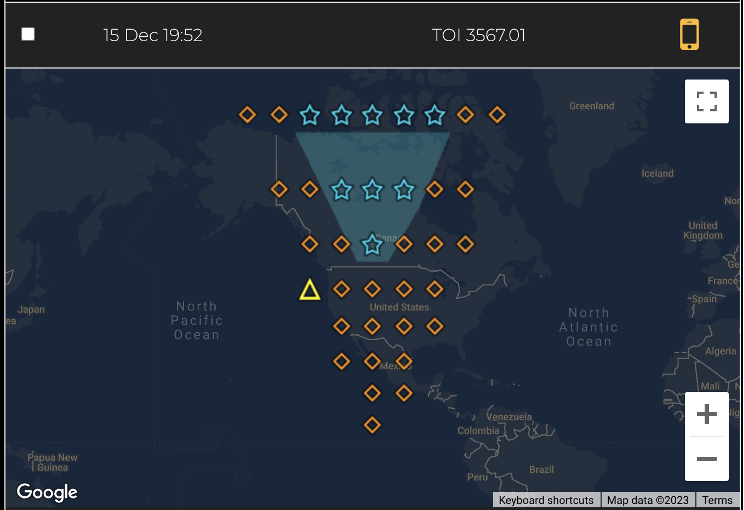
2 – Read The Prediction
Each row will include the target name and the start time of the transit (in your time zone) under “Local Time”. For detailed information, simply click on a row you are interested in! This will reveal the visibility map for the event. Each symbol on the map has a meaning, and you can click on a symbol to see more observing details for that location:
- Blue stars & shading = you can observe the entire event.
- Yellow triangles = you can observe the entire event but you may have tracking difficulty due to the altitude of the star.
-
Orange diamonds = you may miss the start or end of the event.
Below the map are all the recording parameters necessary for your observation – the Coordinates, Exposure Time, Gain, Cadence and Duration. All these parameters are also saved in a Deep Link that you can use when preparing for your observation: it is the smartphone icon on the far right of the row.
OBSERVATION
3 – 10 Minutes Before The Mission
Once your Unistellar telescope is set to observe the night sky, you can use the scientific mode of the Unistellar App. It is time to point to your target. Two options:
A. Deep Link method: The quickest way to find your target is to use your smartphone to click on the Deep Link associated with your event. It will automatically open the Exoplanet transits tab of your Unistellar App and fill up coordinates of the target and its recording parameters. When the Right Ascension box and Declination box are filled with the correct coordinates, click on Goto to point to your target. Once Goto is done, if the Record duration, Exposure time, Cadence, and Gain are correct, you can click on Save.
B. Manual method: Open your Unistellar App, click on the Science menu and select the Exoplanet transits tab. Enter the Right Ascension and Declination and click on Goto to point to your target. Once Goto is done, enter the Record duration, Exposure time, Cadence, and Gain – then click on Save.
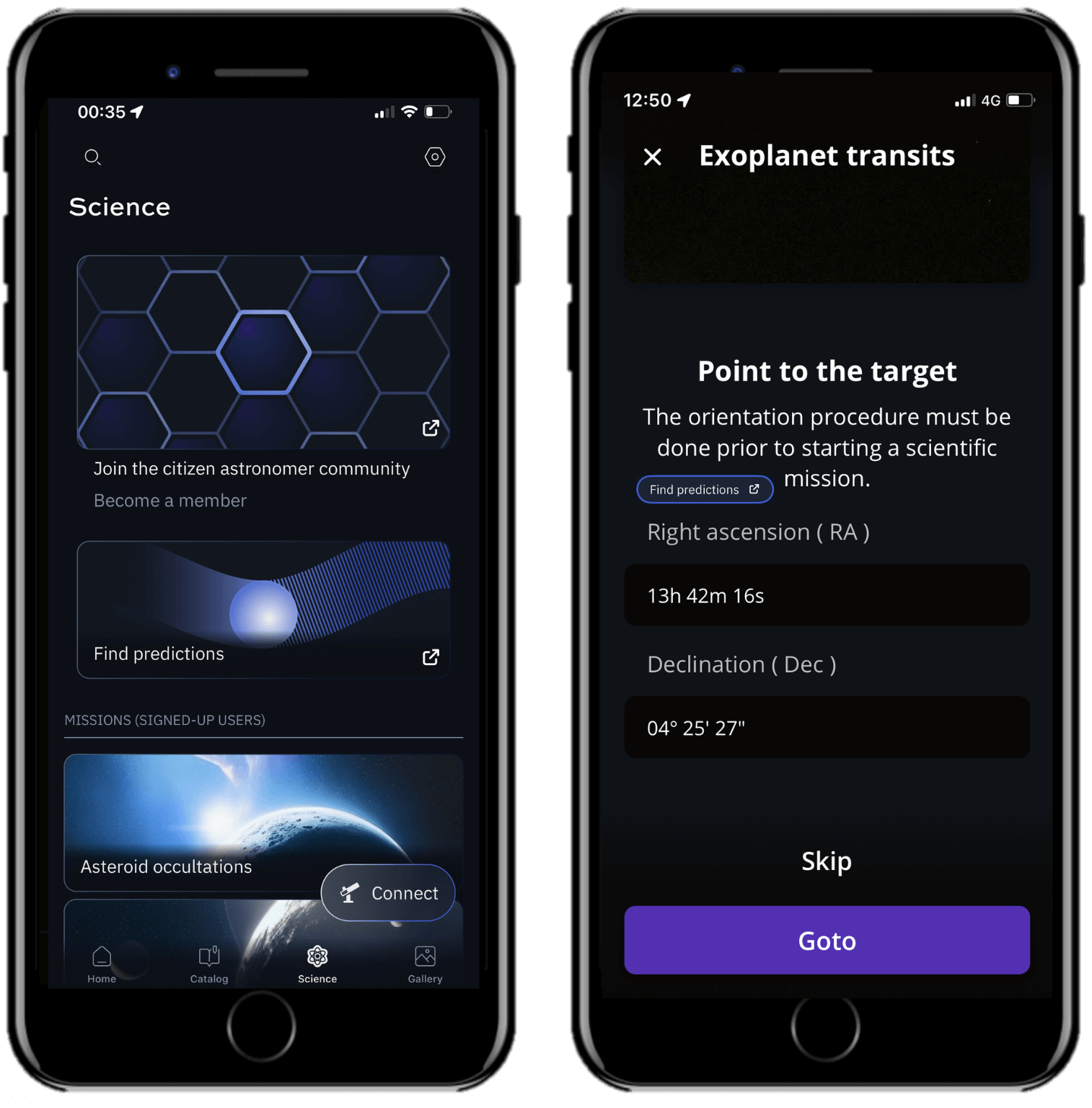
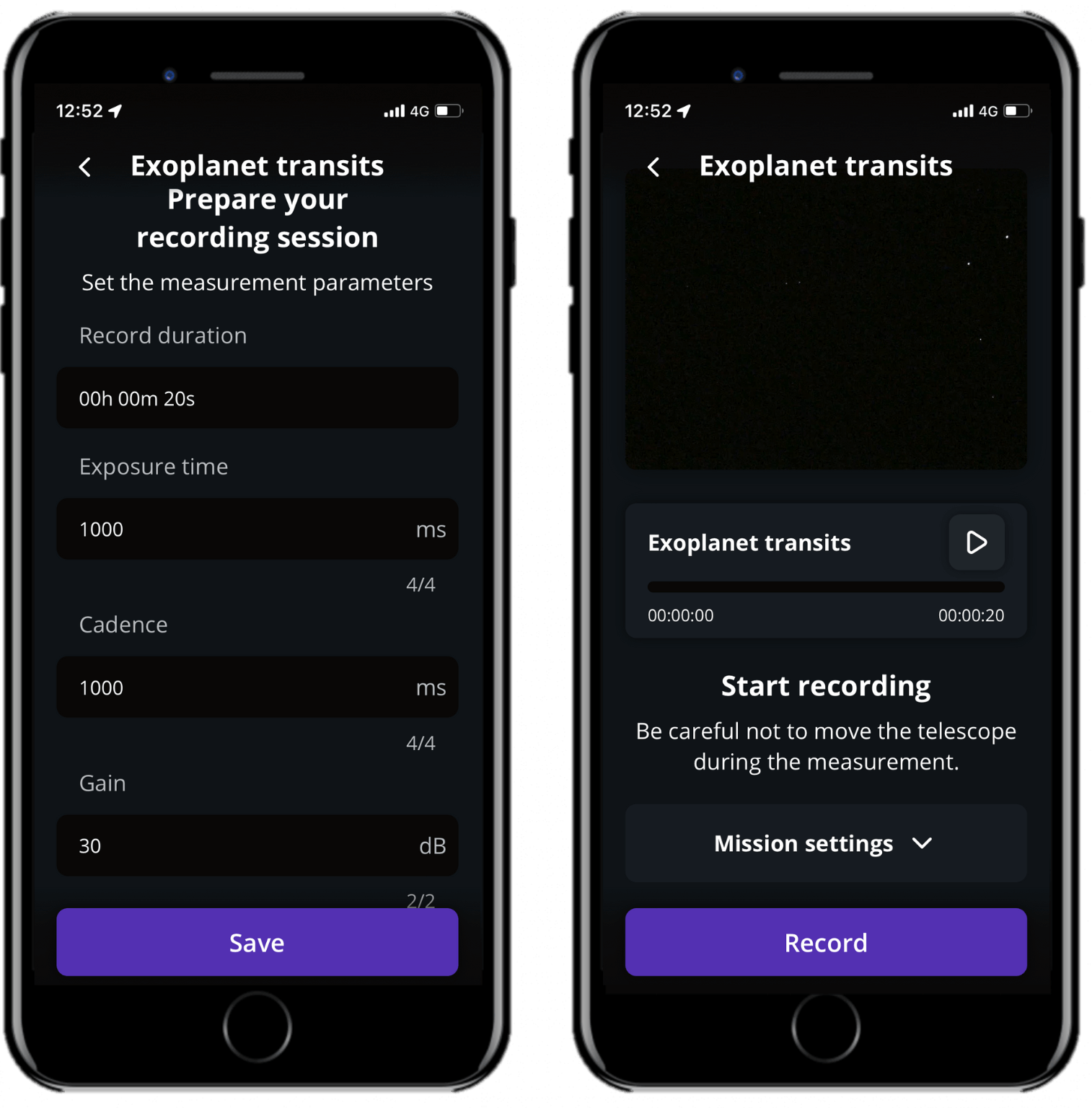
4 – Launch Observation
At the start time, click on the Record button to start the observation.
During the observation, you will not be able to see the transit occur. Once the observation is over, you will see a “Recording complete” message appear and a “Continue” button at the bottom. After clicking Continue, you will be asked to perform a sensor calibration by putting the dust cap on the telescope and recording about 1 minute of data. Please do this! These “Dark Frames” are crucial to achieving the scientific accuracy and precision we need for this challenging exoplanet detection.
POST-OBSERVATION
5 – Share your data
Once you are at home, please upload your data to our server. Our team of scientists will analyze your observation to check if you detected the transit and post a report on the Citizen Science Slack within 48 hours of your upload. If you need help, please read these guidelines on “how to upload my data”.
6 – Tell Unistellar you participated
To make sure your contribution is properly processed and you are credited for the result, always fill out this Exoplanets Observation Report. It asks for your name, the serial number of your telescope, and the name of the scientific mission you just accomplished.
We will send you the result of your scientific mission through our Slack communication platform within 24 hours.
Great Work, Citizen Astronomer.
